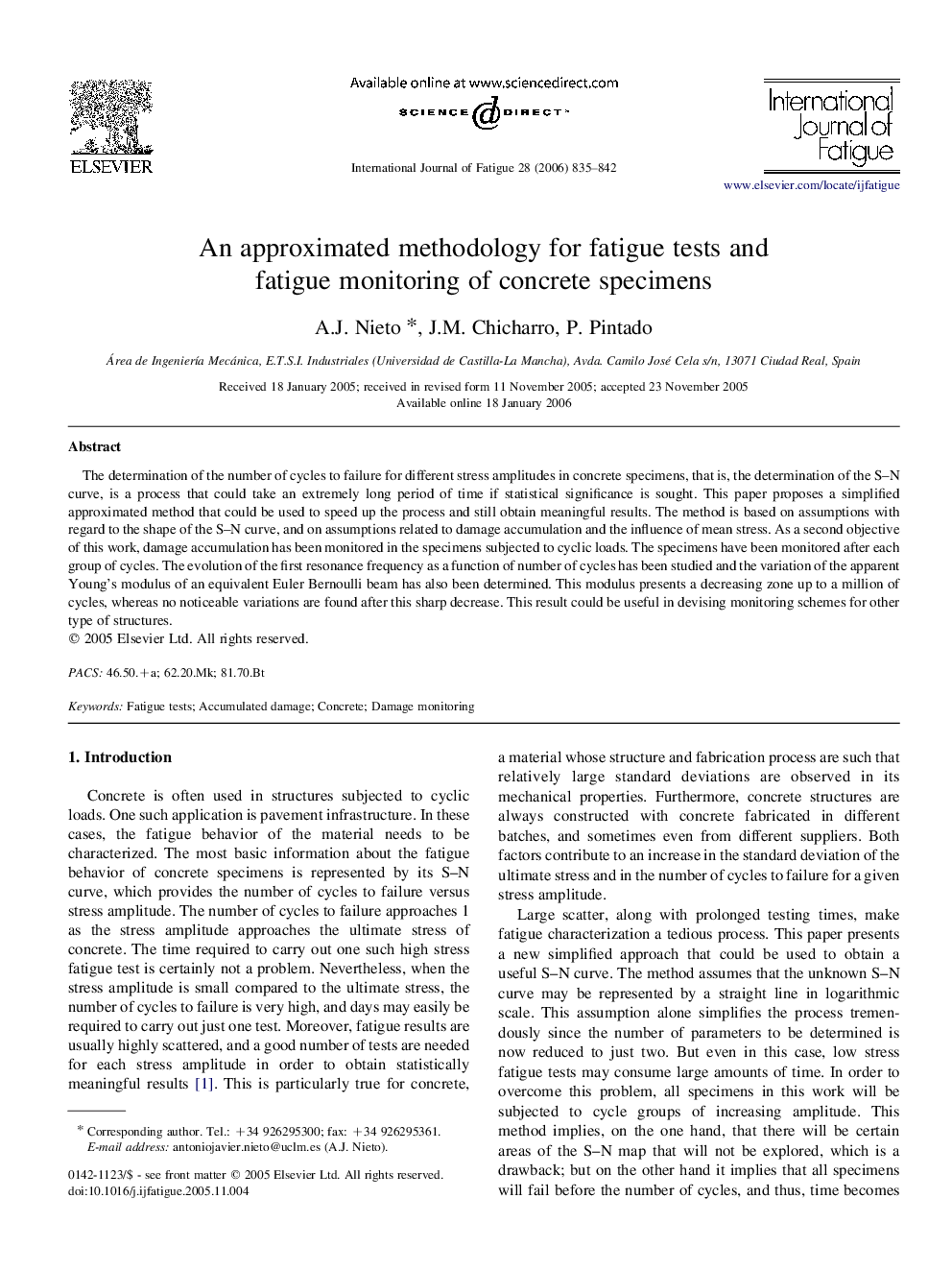| Article ID | Journal | Published Year | Pages | File Type |
|---|---|---|---|---|
| 777972 | International Journal of Fatigue | 2006 | 8 Pages |
The determination of the number of cycles to failure for different stress amplitudes in concrete specimens, that is, the determination of the S–N curve, is a process that could take an extremely long period of time if statistical significance is sought. This paper proposes a simplified approximated method that could be used to speed up the process and still obtain meaningful results. The method is based on assumptions with regard to the shape of the S–N curve, and on assumptions related to damage accumulation and the influence of mean stress. As a second objective of this work, damage accumulation has been monitored in the specimens subjected to cyclic loads. The specimens have been monitored after each group of cycles. The evolution of the first resonance frequency as a function of number of cycles has been studied and the variation of the apparent Young's modulus of an equivalent Euler Bernoulli beam has also been determined. This modulus presents a decreasing zone up to a million of cycles, whereas no noticeable variations are found after this sharp decrease. This result could be useful in devising monitoring schemes for other type of structures.
